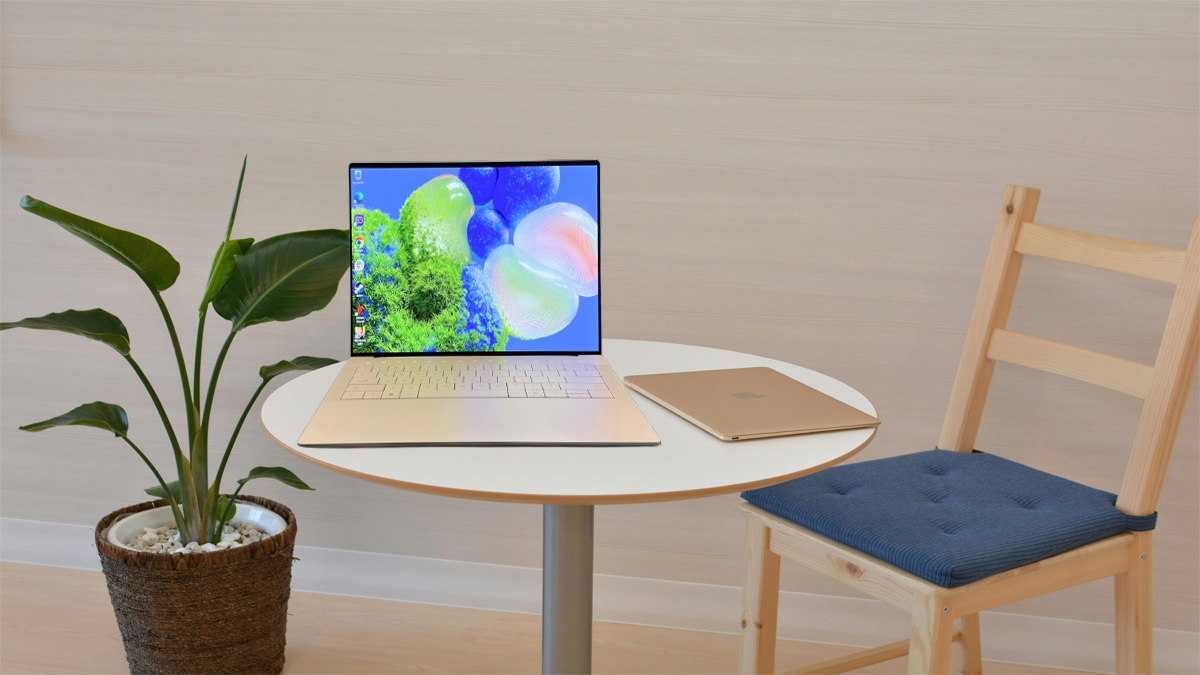Dell XPS 14 Review: A Potent Yet Pricey Premium Laptop

The Dell XPS 14 marks a bold return for Dell’s premium laptop series. Once the gold standard in Windows machines, the XPS line faced stiff competition and mixed reviews in recent years. With rivals upping their game, Dell needed to rethink its strategy.
- Design and Display
The design of the XPS 14 is striking. Inspired by the outgoing XPS 13 Plus, it features sleek lines and a modern aesthetic. The standout element? A stunning 14-inch OLED display that delivers vibrant colors and deep blacks. Whether you’re streaming movies or editing photos, this screen elevates your experience.
- Performance Powerhouse
Under the hood, the XPS 14 packs serious hardware typically reserved for larger laptops. It boasts powerful processors and a dedicated Nvidia graphics card. This combination ensures smooth multitasking and excellent performance for demanding applications. Gamers and creatives alike will appreciate the extra power.
- Portability Meets Capability
At just 3.5 pounds, the XPS 14 strikes a balance between portability and capability. You can easily slip it into your bag without feeling weighed down. Yet, it doesn’t compromise on performance—ideal for professionals on the go.
- Battery Life
Battery life is another highlight of this laptop. With efficient components working together, you can expect all-day usage on a single charge. Whether you’re in meetings or working from a café, you won’t be scrambling for an outlet.
- Price Point
However, all these features come at a cost. The XPS 14 is undeniably pricey compared to its competitors. While it offers premium quality and performance, budget-conscious buyers may find better value elsewhere.
Dell XPS 14: A Balanced Blend of Power and Portability
At first glance, the Dell XPS 14 impresses with its sleek design. At just 18mm thick and weighing 1.72kg, it strikes a balance between portability and performance. While it may not be the lightest option on the market, it certainly offers features that make it stand out.
One of its most notable attributes is the Nvidia RTX 4050 graphics card. This dedicated GPU allows for smooth 1080p gaming and enhances creative tasks like video editing and graphic design. If you’re someone who needs power on the go, this laptop won’t disappoint.
The build quality is another highlight. Crafted from aluminum and glass, the XPS 14 exudes a premium feel that many lighter competitors simply can’t match. The minimalistic exterior, featuring a simple Dell logo, gives it an understated elegance.
When it comes to connectivity, the XPS 14 doesn’t skimp. It includes three USB-C/Thunderbolt 4 ports—two on the left side and one on the right—along with a 3.5mm headphone jack and a microSD card slot. While some users may find the microSD slot less useful (especially if they use full-size SD cards), Dell thoughtfully includes a dongle for HDMI and USB-A connections in the box.
In summary, while there are lighter laptops available for travel enthusiasts, few can offer the same level of performance as the XPS 14. With its powerful graphics capabilities and high-end build quality, it’s an excellent choice for those who need both portability and power in their daily lives. Whether you’re gaming or working on creative projects, this laptop has you covered.
Dell XPS 14: A Futuristic Upgrade with Room for Improvement
The 2022 Dell XPS 13 Plus introduced a striking design. Its seamless trackpad, flush “zero-lattice” chiclet keyboard, and innovative capacitive touch function row turned heads. However, it faced criticism for overheating and short battery life. Fast forward to the new XPS lineup, which now boasts this futuristic aesthetic across various models, including the XPS 14.
Sleek Design Meets Enhanced Performance
The XPS 14 is a visual delight. Its sleek chassis and modern features make it a contender against the MacBook Pro. Unlike its predecessor, the XPS 13 Plus, this model doesn’t suffer from excessive heat or battery woes. It can be configured with discrete graphics options similar to the XPS 15, providing versatility without compromising on performance.
Power Under the Hood
Equipped with the Meteor Lake Intel Core Ultra 7 155H processor, the XPS 14 showcases impressive speed. It outperforms the Core i7-1280P found in the XPS 13 Plus by a significant margin—21% faster to be exact. This leap in processing power addresses previous complaints about sluggishness in earlier models.
Battery Life That Impresses
Battery life is where the XPS 14 truly shines. With an OLED display that delivers stunning visuals, it manages to last up to 12 hours on a single charge—double that of the troubled XPS 13 Plus. Remarkably, this improvement comes from just a 23% larger battery. Users can enjoy extended productivity without constantly searching for an outlet.
Conclusion: A Step Forward but Not Perfect
While the Dell XPS 14 marks significant improvements over its predecessors in terms of heat management and battery longevity, it still feels somewhat underwhelming compared to its competitors. The design is bold and captivating, yet some users may seek more innovation or features at this price point ($2,500 as reviewed).
In summary, if you’re looking for a laptop that combines style with solid performance and decent battery life, the Dell XPS 14 is worth considering—but keep your expectations balanced as you explore its capabilities.
The XPS 14: A Mixed Bag of Improvements
The latest XPS 14 model brings several notable upgrades. It features three Thunderbolt 4 USB-C ports, a combo audio jack, and a microSD slot. This is an improvement over the previous model’s two ports. Users can also configure it with up to 64GB of memory and a whopping 4TB of storage space.
However, the XPS 14 does have its downsides. Weighing in at 1.1 pounds more than the XPS 13, it’s only slightly thicker—just a tenth of an inch. While the display is larger, it comes at a lower resolution. Pricing starts at $1,500 for the base model and goes up to $2,500 for higher configurations. Although this may seem reasonable compared to other models, it’s still on the pricey side.
Despite these enhancements, I find myself underwhelmed by one crucial aspect: typing comfort. The key travel is adequate but shallow. The switches feel overly springy—like trying to push down a metal Slinky that just won’t stay put. Additionally, the plastic key caps feel thin and cheap for such an otherwise premium device.
The close spacing of the keys adds to my frustration. For a laptop marketed as elegant and sturdy, these design choices fall short.
The Touch Bar Dilemma: A Shift in Muscle Memory
The transition from traditional function keys to a touch bar can be jarring. For many, muscle memory is a powerful ally. Yet, when that familiar row of keys disappears, confusion reigns.
I often find myself mistaking the tilde key for the escape key. Caps lock? I hit it instead of tab more times than I care to admit. The lack of tactile feedback on the touch bar makes it hard to adjust. Unlike the trackpad, which offers haptic feedback, the function area feels flat and unresponsive.
Yes, I could glance at the screen to confirm my keystrokes. But let’s be honest: there’s something satisfying about feeling and seeing a button press register beneath your fingers.
The undefined space of the trackpad doesn’t bother me much. It spans widely below the keyboard, mimicking a traditional setup if you tap far enough left or right. Still, accuracy isn’t guaranteed every time. Occasionally, I resort to using the OLED touchscreen for navigation—though not often.
One moment stands out: searching for the power button took longer than it should have. Hidden to the right of the backspace key, it lacks any icon or indication that it’s there. Just a dark gray key blending into its surroundings made me feel somewhat foolish for missing it initially.
As for performance? The optional RTX 4050 GPU does add some speed for graphics and video tasks. However, let’s be clear: this isn’t primarily a gaming laptop. Sure, you can run games like Baldur’s Gate 3 with adjusted settings on the Dell XPS 14. But if gaming is your priority, options like the Asus ROG Zephyrus G14 offer more robust hardware at competitive prices—complete with features tailored specifically for gamers.
In conclusion, while innovation is exciting, sometimes tradition has its merits too. The tactile joy of pressing a physical key cannot be easily replaced by sleek design alone.
The XPS 14 vs. MacBook Pro: A Comparative Review
When it comes to laptops, the Dell XPS 14 and Apple MacBook Pro often find themselves in the spotlight. However, if you’re considering an upgrade or a new purchase, the differences are stark.
Performance Matters
The base M3 chip in the MacBook Pro outperforms the XPS 14 across various benchmarks. Whether you’re into video editing or 3D modeling, Apple’s machine holds a significant edge. If performance is your priority, the MacBook Pro is hard to beat.
Design Choices
Apple recently ditched its controversial touch bar. In contrast, Dell introduced a less useful version on the XPS 14. While it may look sleek, functionality should always come first.
The haptic trackpad on the XPS 14 is visually appealing but can be tricky to navigate compared to the traditional trackpad on the MacBook Pro. Additionally, many users prefer Apple’s keyboard over Dell’s shallow and springy option.
Price Point Concerns
At its price point, the XPS 14 competes more with Windows alternatives like the Asus Zenbook 14X OLED. However, if your needs are basic—like browsing or document editing—you might want to save $400 and opt for integrated graphics instead.
Future Considerations
With rumors swirling about a $1,300 Qualcomm Snapdragon-powered XPS 13 release, it may be wise to hold off on purchasing any Dell XPS models for now. Waiting for reviews could save you from buyer’s remorse.
Conclusion: Is It Worth It?
In summary, while the XPS 14 has its merits—especially against other Windows laptops—it falls short when stacked against the MacBook Pro. The design may catch your eye, but usability and performance take precedence for most users. Choose wisely!






